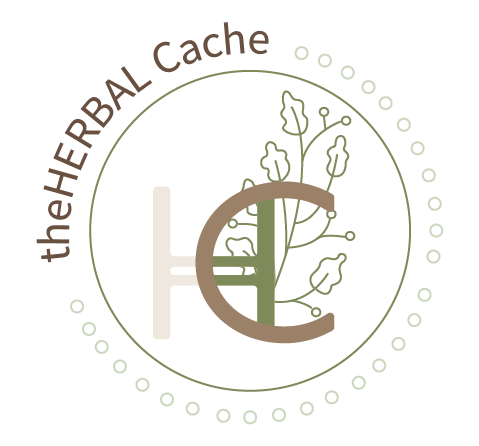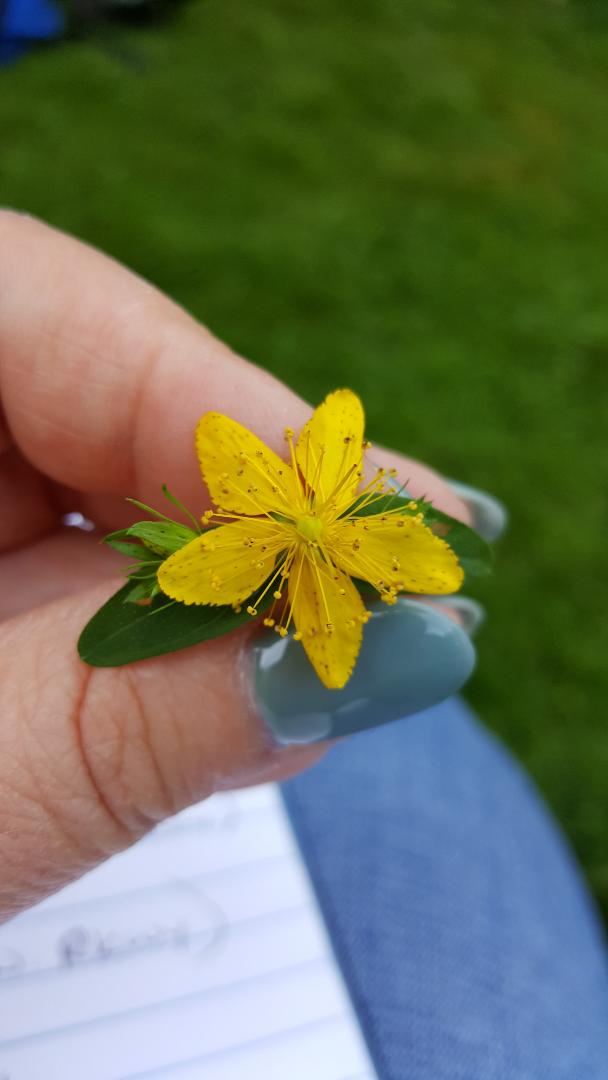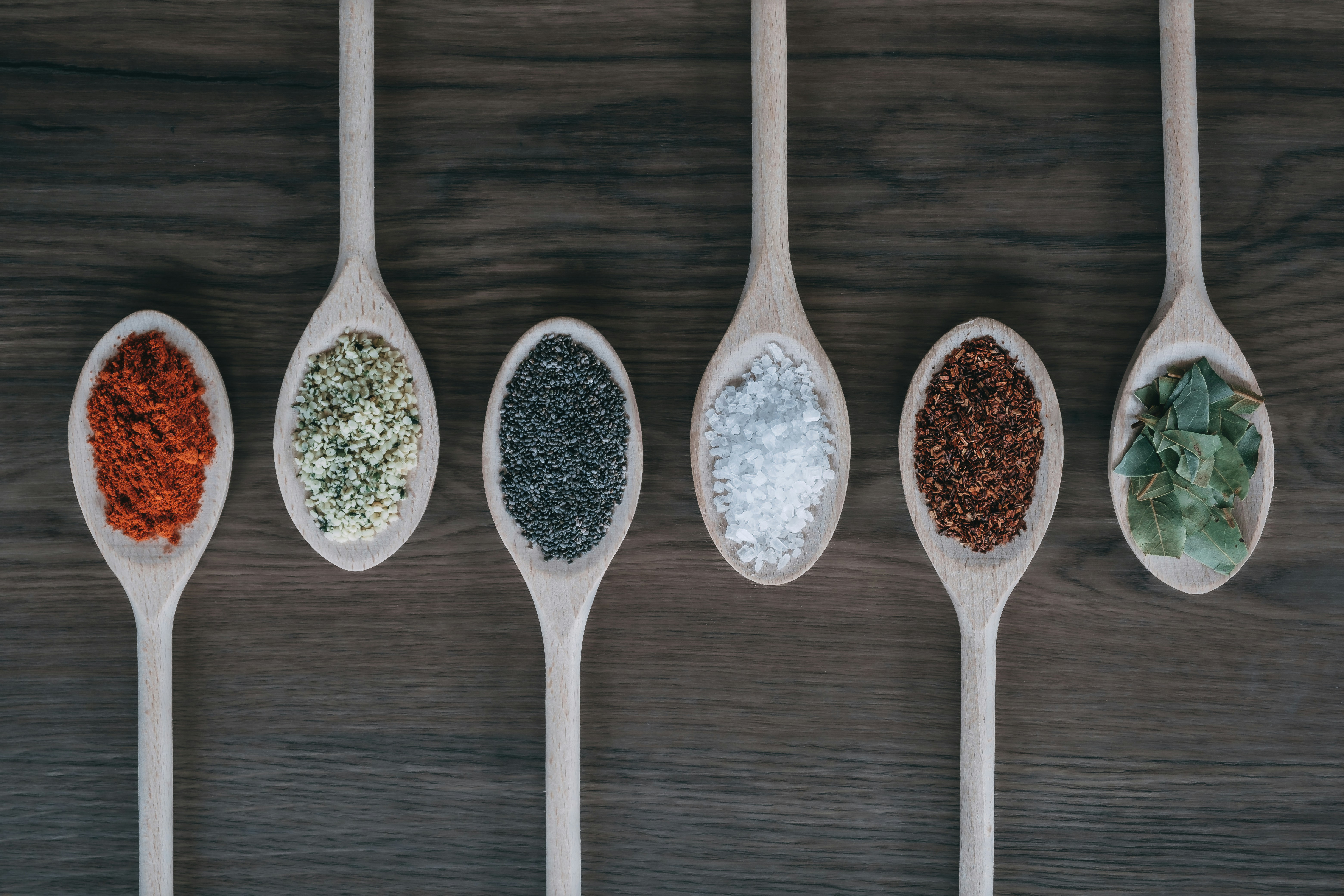
Welcome to another blog post in my series “Myths in Herbal Medicine”. Here I try to shed some light and knowledge surrounding a number of myths or views toward herbalism that are skewed one way or the other.
In this post I go over whether or not to use herbs by themselves or grouped in formulas and how formulas are created. A reminder that I am also talking about weeds when I refer to herbs, as they make up a huge part of my herbal apothacary.
Take One Herb at a Time and Keep it Simple
Using a single herb for a symptom or purpose is fine. There is nothing wrong with that. Herbs, and weeds, are sometimes classified as simple little plants, but they can be complex in nature. Taking one herb by itself can help you learn how it affects you.
A single herb can affect you in one way or a number of ways. It depends on how you and the herb connect with each other. Because a herb may work one way for you, but slightly different for someone else.
When taking an herb for the first time, sometimes it is best to take it by itself. Pay attention to how you feel or if there are any changes in your body. This a a great way to learn how the herb is affecting you.
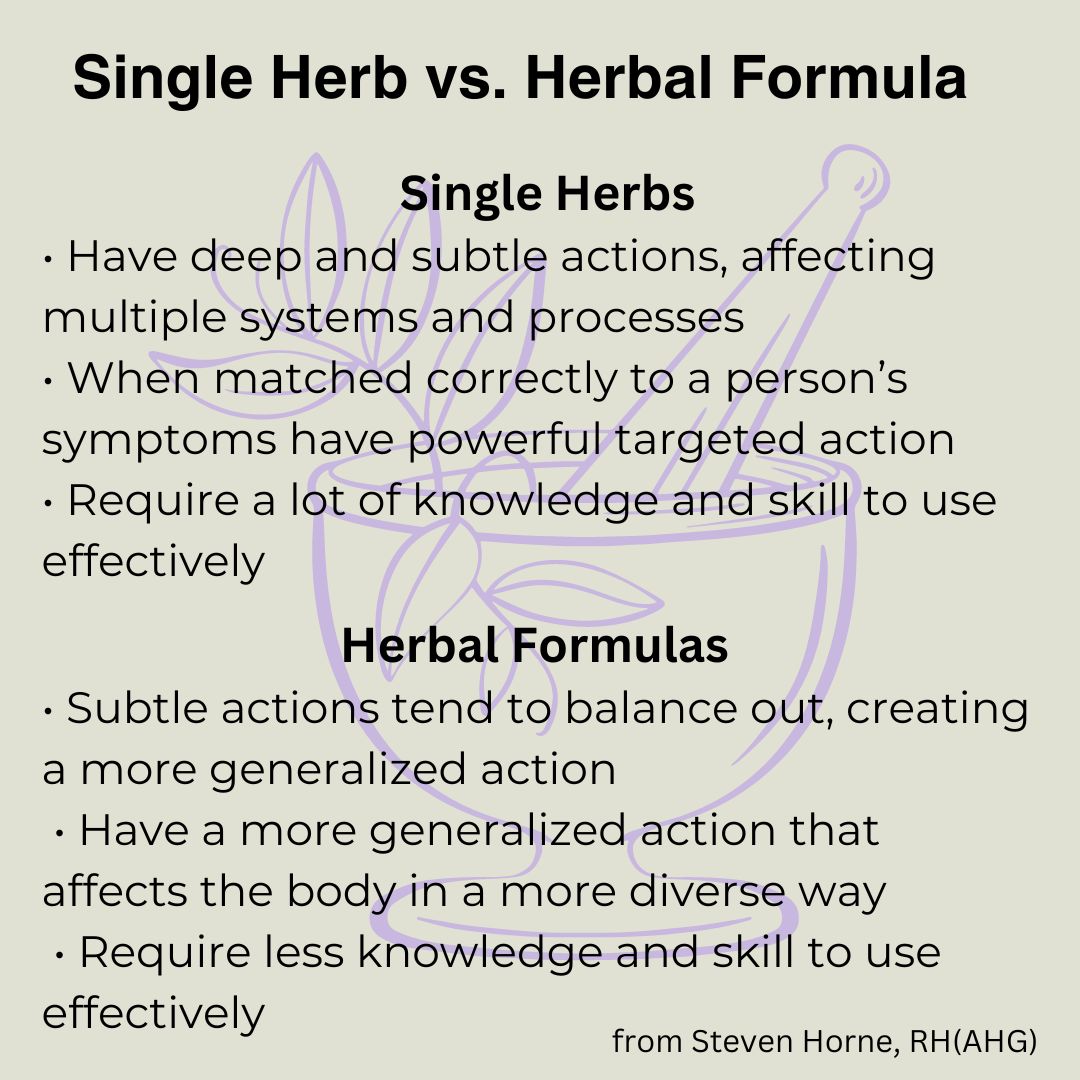
Why Formulas? Because Herbs Work Together in Harmony
Many herbs, when combined with other herbs, work better then when on their own. There is a synergy that is created.
Synergy = “the whole is greater than the sum of its parts”
You can compare it to a car. A tire on its own rolls, but when it is combined with all the other parts of a car, it can roll very fast! And if you remove certain parts, the car will no longer work the way it was intended.
European, TCM and Ayurveda generally believe through practice and experience that synergy between herbs is happening and is a central part of their doctrine. This synergy is the harmony created by the individual as part of something, like the tire and car I just referred to.
Many herbalists believe that putting herbs into formulas makes them much stronger then using them on their own because of the synergy that is taking place. It’s like creating a team. A recent double-blind, crossover trial using 20 young, healthy volunteers, taking a formula containing ginseng, Panax ginseng, and ginkgo, ginkgo biloba, demonstrated to be more effective in improving cognitive function than either alone (Scholey and Kennedy 2001).

History of Herbal Formulas
Herbs have been used in formulas for thousands of years. Many of those formulas are still used today, some maybe slightly changed.
One of the best-preserved manuscripts, called Wushier Bing Fang, written on silk, described prescriptions for treating 52 illnesses. It is believed it was compiled around 900 BC, nearly three thousand years ago! It was found in a Chinese Emperor’s tomb. It contains over 170 formulas using two or more ingredients.
Combining Herbs into Formulas
Combining herbs can almost be called an art. The fun, or interesting, part is that every formula is unique. A formula is created for one individual based on their health history, diet, exercise, current symptoms, etc. There is no “right” way because every herbalist adds their personal flair when they create their formulas.
There are a number of things that do need to be taken into consideration when creating formulas:
- goal of the formula
- knowledge of the herbs
- herbal combinations best for a particular situation
- the proportions to use in a formula
- taste
- the starting dose
- frequency of dose
- how long to dose
- what form should the formula take
- Astringency (the herb’s ability to constrict body tissue)
- Bitterness
- Pungency (the amount of heat in the formula which helps all the herbs in the formula get throughout the body)
There is no magic number for the amount of herbs you should use when formulating herbal medicine. What matters most is not how many herbs you used in your formula but your reasons for selecting them and your approach to combining them.
Delivery Methods
Herbs can be formulated together in a number of ways. The art is knowing, and learning, which herbs to combine to get the affect you are after and what delivery method to use.
You need to ask a couple of questions. Is this the most convenient, most delicious, most effective way to deliver your remedy? Would the formula be better as an infused honey, a steam, or a capsule? Is the person taking it going to want to take it? Also consider solubility: choose herbs that will extract in the method you’ve chosen, or choose the method based on the herbs.
Here are a few ways for delivery:
- tea
- tincture
- capsule
- oxymel
- infusion
- topical
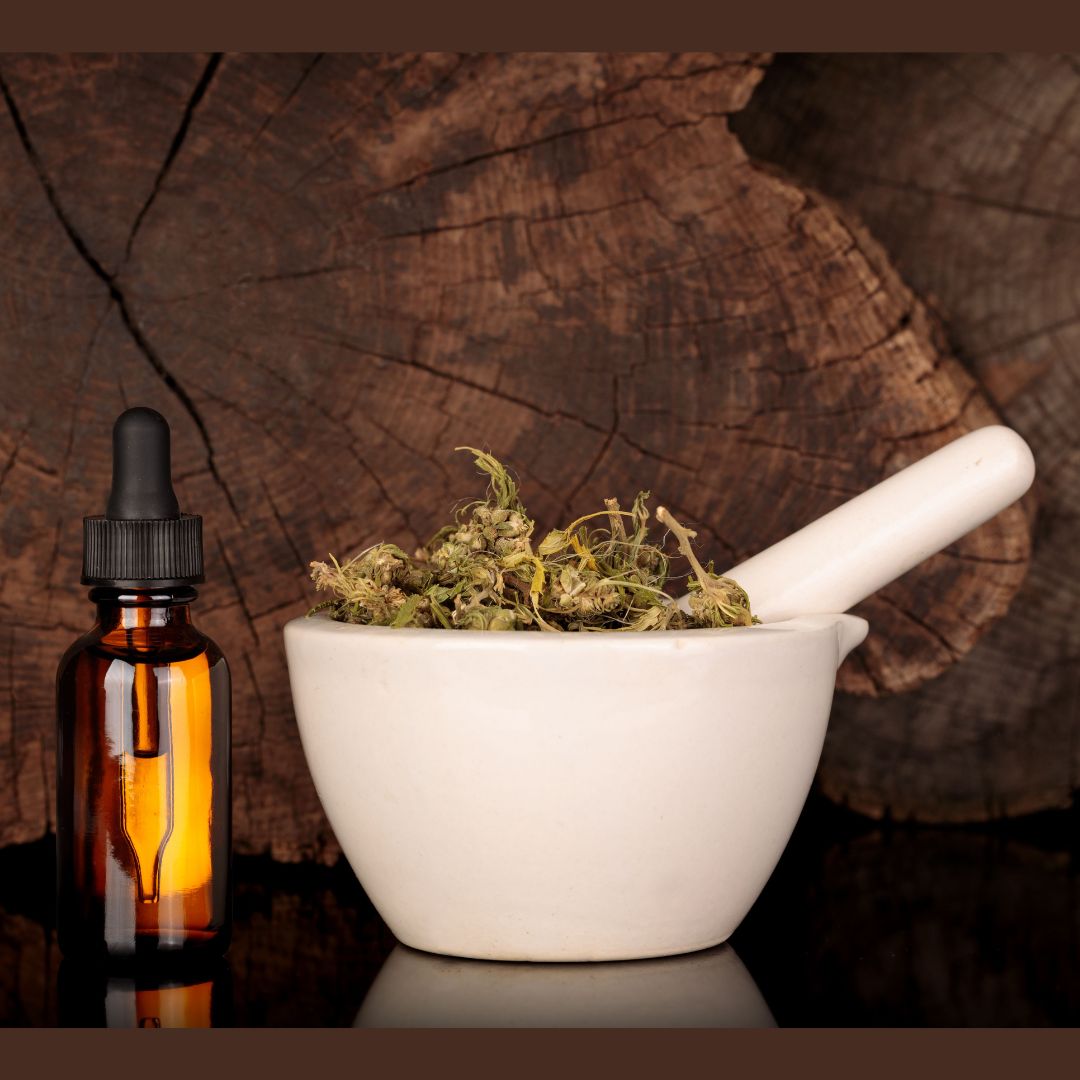
Combining Herbs in the Culinary World
As we all know, we use many herbs for cooking. And in many cases, we are using multiple herbs together, because they work well together.
Some traditional combinations are:
- basil – with chives, chilli, garlic, oregano
- bay – with parsley, thyme, garlic, oregano, marjoram
- chilli – with coriander, garlic, ginger, lemongrass, mint, oregano
- chives – with basil, garlic, tarragon
- dill – with chives, garlic, parsley, tarragon
- garlic – with basil, rosemary, sage, fennel, chilli, coriander
- oregano – with basil, parsley, chives, thyme, bay, chilli
- sage – with rosemary, garlic, marjoram
- thyme – with bay, parsley, garlic, rosemary
Still Leary of Making and Using an Herbal Formula?
Herbal medicine is generally more forgiving than you may think, so don’t be afraid to try. Trust your knowledge, gut feeling and just create!
The only way you learn how the herbs work together is if you try. Like I mentioned earlier, every formula is different because every herbalist adds their own flair and knowledge to it.
And like everything else, creating formulas to use over single herbs, is a learning process. One formula may not do what you wanted it to do, but that doesn’t mean give up. Keep trying.
Creating a formula is a lot like arranging a flower bouquet or writing a poem, finding that perfect balance and beauty that works for you.

Check out the whole series, “Myths in Herbal Medicine”
Read my other blog posts in this series of “Myths in Herbal Medicine” and let me know what you think.
